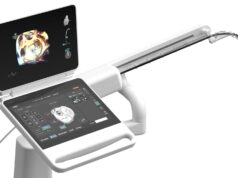 Researchers have developed a clinical algorithm that distinguishes between treatable sudden cardiac arrest and untreatable forms of the condition.
Researchers have developed a clinical algorithm that distinguishes between treatable sudden cardiac arrest and untreatable forms of the condition.
The findings, Journal of the American College of Cardiology: Clinical Electrophysiology, have the potential to enhance prevention of sudden cardiac arrest, based on key risk factors identified in this study, the authors suggest.
“All sudden cardiac arrest is not the same,” said Sumeet Chugh (Cedars-Sinai Health System, Los Angeles, USA), lead author of the study. “Until now, no prior research has distinguished between potentially treatable sudden cardiac arrest versus untreatable forms that cause death in almost all instances.”
According to the researchers, out-of-hospital sudden cardiac arrest claims at least 300,000 US lives annually, and for those affected, 90% will die within 10 minutes. The biggest challenge, they claim, lies in distinguishing between those who stand to benefit the most from an implantable cardioverter defibrillator (ICD)—and those who would not.
“Defibrillators are expensive and unnecessary for individuals with the type of sudden cardiac arrest that will not respond to an electrical shock,” said Chugh. “However, for patients with treatable, or ‘shockable,’ forms of the disease, a defibrillator is lifesaving.”
Chugh says this new research provides a clinical risk assessment algorithm that can better identify patients at highest risk of treatable sudden cardiac arrest—and thus, a better understanding of those patients who would benefit from a defibrillator. The risk assessment algorithm consists of 13 clinical, electrocardiogram, and echocardiographic variables that could put a patient at higher risk of treatable sudden cardiac arrest.
The risk factors include diabetes, myocardial infarction (MI), atrial fibrillation (AF), stroke, heart failure, chronic obstructive pulmonary disease (COPD), seizure disorders, syncope and four separate indicators found with an electrocardiogram (ECG), including heart rate.
“This first-of-its-kind algorithm has the potential to improve the way we currently predict sudden cardiac arrest,” said Eduardo Marbán (Smidt Heart Institute, Los Angeles, USA). “If validated in clinical trials, we will be able to better identify high-risk patients and therefore, save lives.”
The research study utilised data from two ongoing multiyear studies founded by Chugh: the Oregon Sudden Unexpected Death Study, a comprehensive assessment of sudden cardiac arrests among residents of the Portland metropolitan area; and the Ventura Prediction of Sudden Death in Multiethnic Communities (PRESTO) study, based in Ventura. Both studies are community partnerships with area residents, as well as first responders, medical examiners and hospital systems that deliver care within the two communities.









